This Rough Guide To Indian Sandstone will explain that, in addition to looking great and offering great natural variety and character within each stone, sandstone has been used as paving for millennia. It is also hard-wearing and long-lasting, but can also be quarried, hewn and cut into desired shapes easily. Additionally, sandstone is easily available and abundant. These factors explain why it is so popular today and in the past, and why it is often used in landscaping and garden design.
Sandstone slabs are a popular choice for flooring, cladding, and paving projects, and for good reason. This natural stone material offers a unique combination of durability, beauty, and versatility, making it an ideal choice for a variety of applications.
Sandstone is a sedimentary rock, and is one of the most common on Earth. It is formed on ocean floors, sea and lake beds, where sands, silts and other clastic materials settle in the water. Over time, gravity, the pressure of the water above and often chemical bonding between the particles, start to fuse these sedimentary deposits together into rock (creating sandstone).
Sandstone is a durable material that can withstand weathering and erosion, making it an excellent choice for outdoor applications. However, it can also be prone to chipping and cracking if subjected to heavy stress, so it’s important to choose the right type of sandstone for your project.
One of the defining features of sandstone is its natural color variations. From beige to red to brown to grey, the colour of sandstone slabs can vary widely, which is part of what makes this material so appealing. However, if you’re looking for a more uniform look, you may want to consider using a different type of stone, as the colour of sandstone can vary from one batch to another.
Another important factor to consider is the texture of the sandstone slabs. Some sandstone slabs have a rough texture, while others are smooth. The texture can affect the slip resistance of the slabs, so it’s important to choose a texture that’s appropriate for your intended use.
Sandstone is a porous material, meaning it can absorb liquids. If not sealed properly, this can lead to staining, so it’s important to take steps to protect the stone from liquids. This is particularly important if you’re using sandstone slabs for outdoor applications, as they’ll be exposed to the elements.
To ensure the longevity of your sandstone slabs, it’s important to perform regular cleaning and sealing. This will protect the stone from staining and deterioration, and help to maintain its appearance over time.
The cost of sandstone slabs can vary widely depending on the quality, size, and availability of the material. While sandstone slabs can be more expensive than other types of stone, they can also be more cost-effective in the long run due to their durability and low maintenance requirements.
Sandstone slabs can be found in many different countries, but the availability of the material may vary depending on your location. To ensure that you’re able to get the sandstone slabs that you need for your project, it’s important to do your research and plan ahead.
Finally, it’s important to choose sandstone slabs that are compatible with your intended use and location. The slabs should be installed by a professional to ensure proper placement and stability, and you should consider factors such as climate, soil type, and exposure to the elements when making your selection.
****************************************
Let’s take a look at the groups of Indian sandstone colours available for your patio paving (and landscaping elements, such as edging, walling and coping).
The Kandla Gray Indian Sandstone has silvery highlights and a mid-grey hue. Some stones may be darker, but the overall blend looks like dove grey.
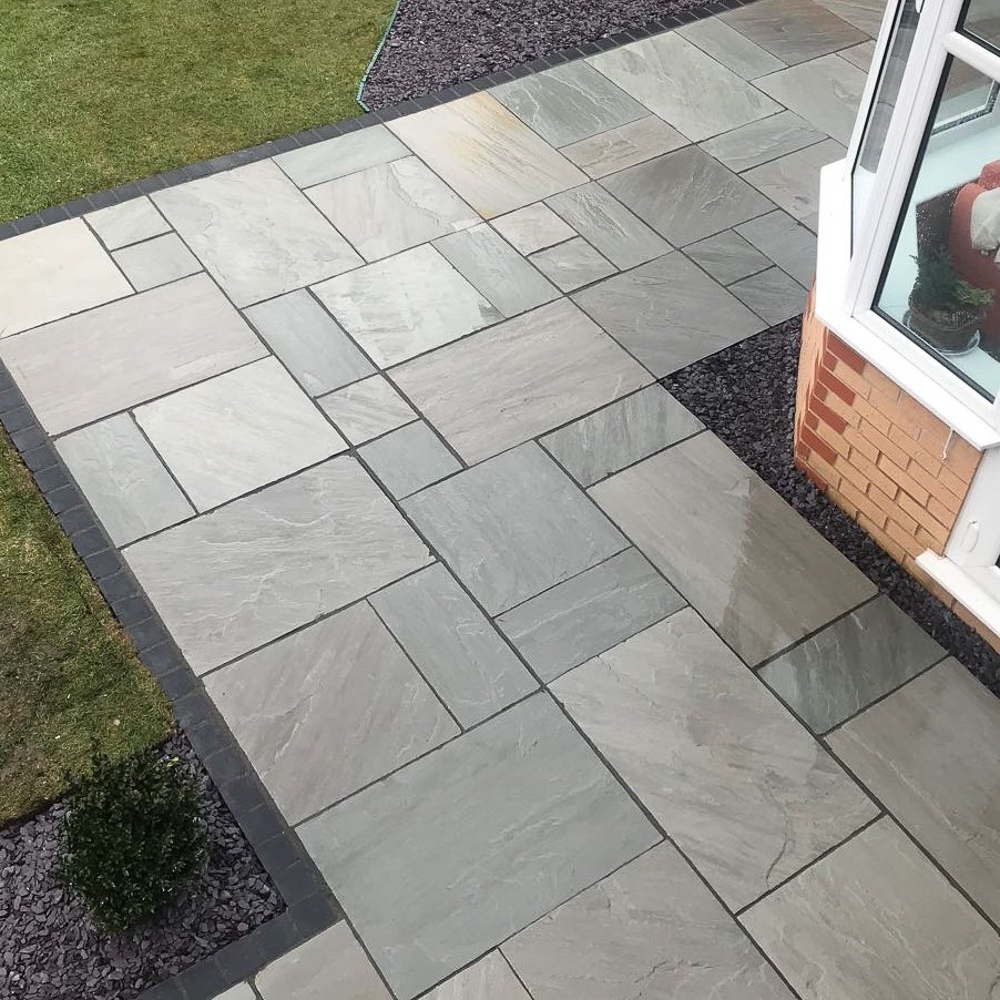
Dry Appearance: Light Grey
Wet Appearance: Mid-Grey
Raj Green Indian sandstone is a mix of browns, tans and browny-grey stones with a slight green hue to them. It provides a nice neutral palette that works well with a variety of property types.
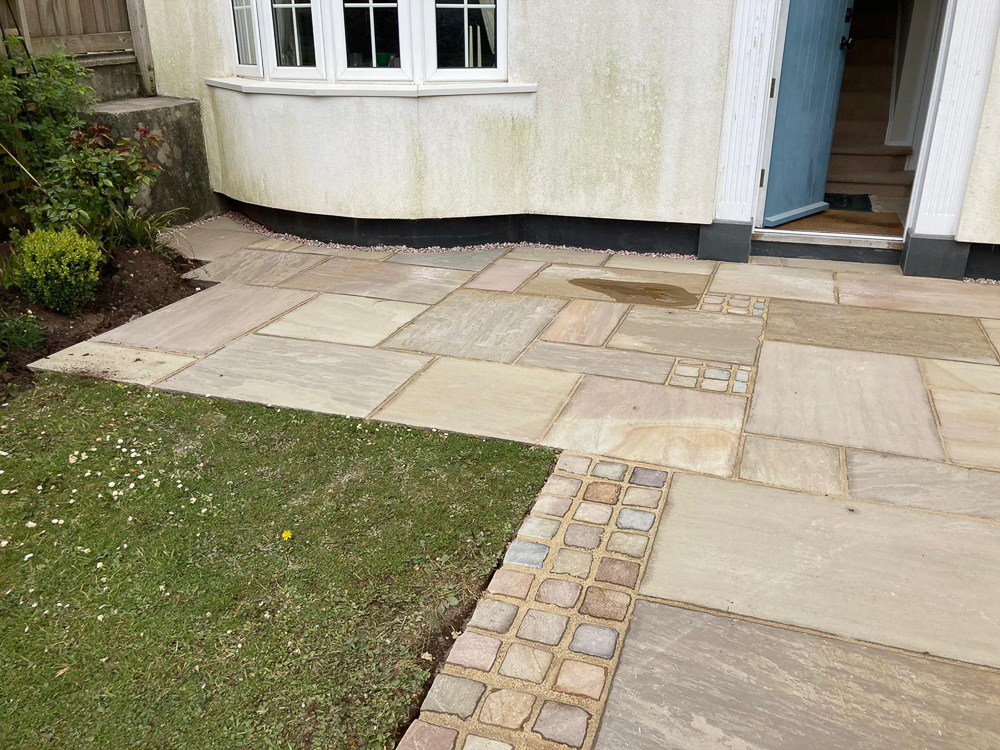
Dry Appearance: Brown, Cappuccino, Light Grey, Red, Green
Wet Appearance: Brown, Grey, Umber, Sienna, Red
There are light gold, wheat, cream, butter, mustard, and honey colours in Fossil Buff Indian sandstone. A variety of accents, blooms, waves, and striations in contrasting lighter tones can be seen in the stone, such as tan, ochre, and sienna. It is also common to find fossils in this sandstone (ferns and ammonites are commonly found).
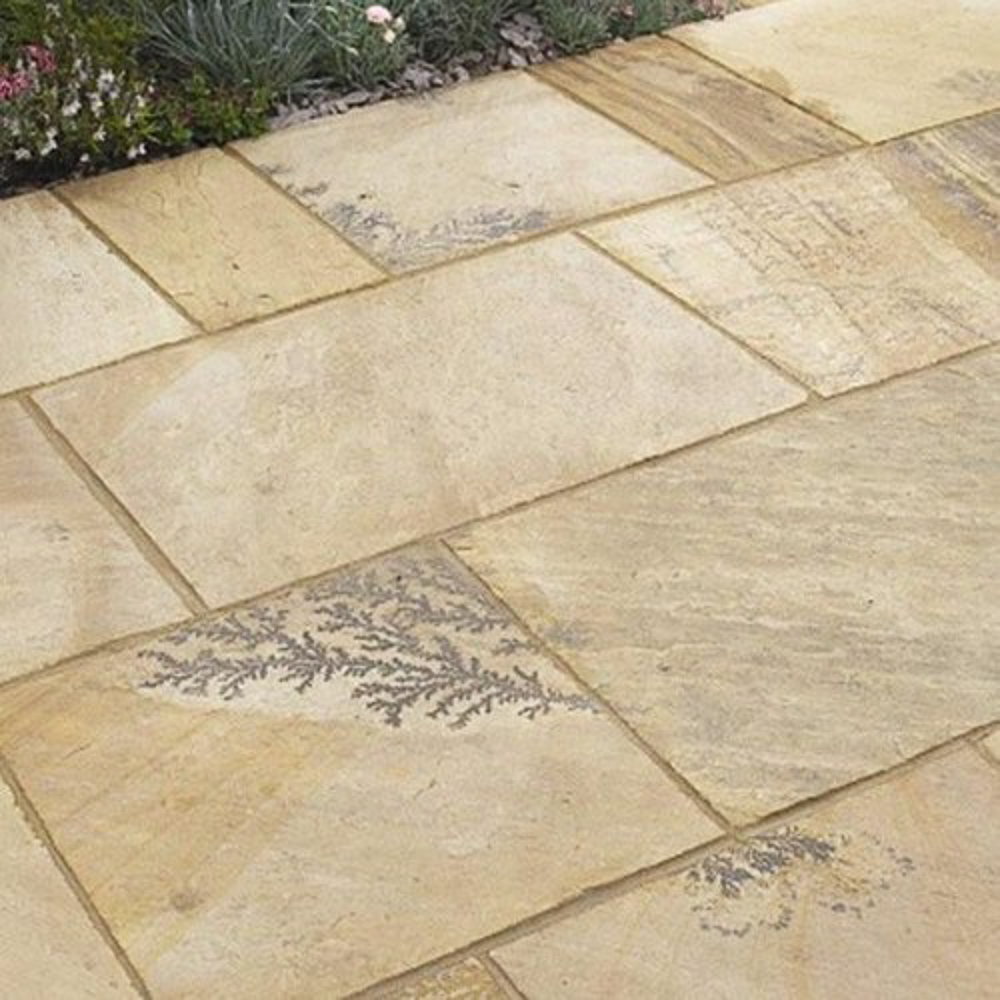
Dry Appearance: Light gold, honey and cream with darker patterns and hues
Wet Appearance: Gold, butter, honey and mustard
Autumn Brown is a classic, discreet product and one of our most popular sellers.
Its understated colour lends itself to most locations blending in and adding warmth with its varied and subtle brown tones.
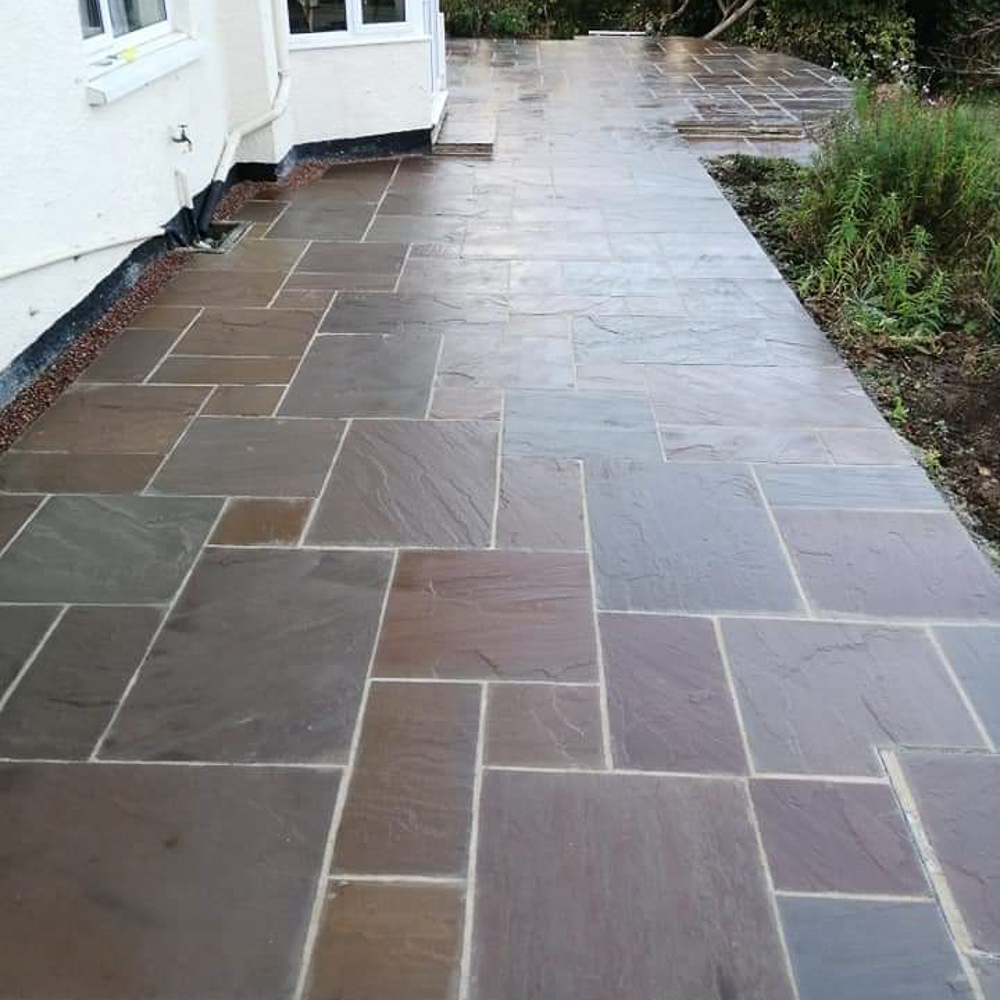
Dry Appearance: Mid-brown, honey and grey with darker patterns and hues
Wet Appearance: Mid-dark brown, Grey, Red
Rippon Indian Sandstone is a creamy / light beige colour with pink and rosy accent colours. When dry, it looks flatter, more uniform and subtle. When wet, the pinks and rosy hues come out, and it looks more vibrant and distinct.
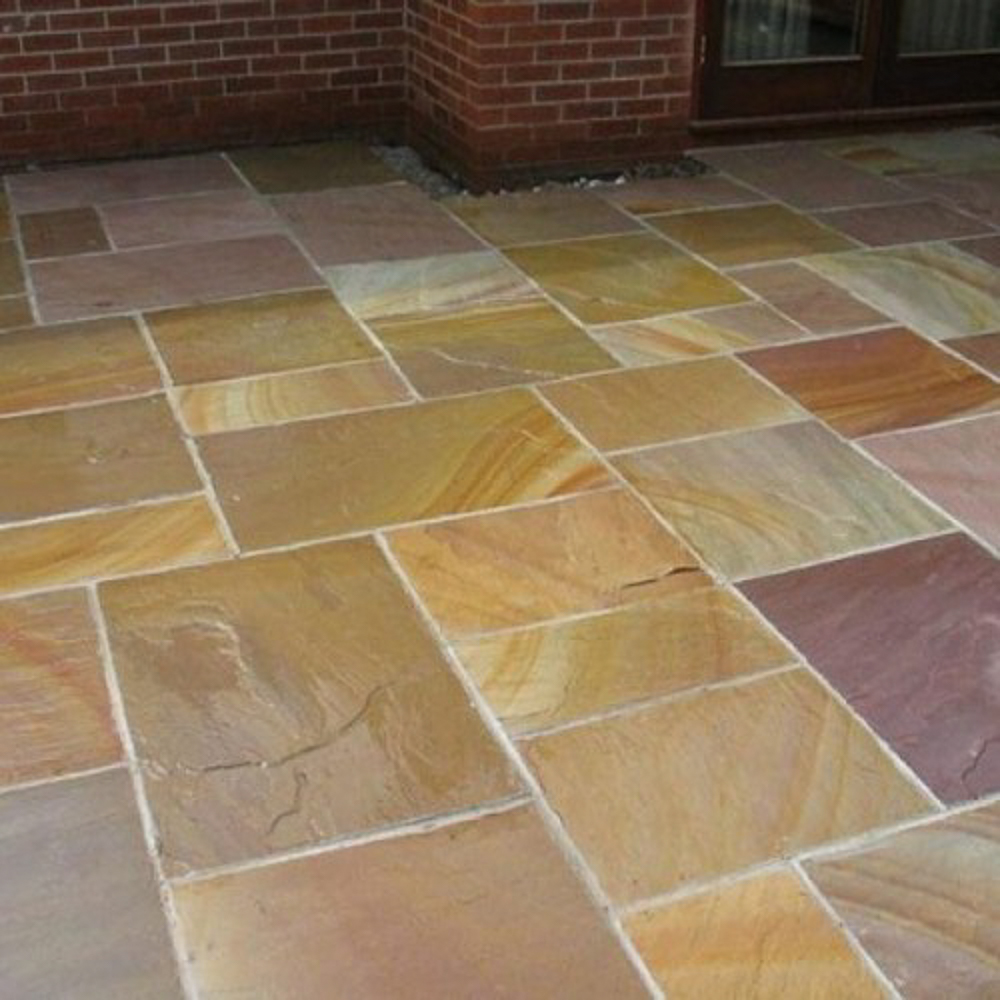
Dry Appearance: Cream, light beige, soft pastel pinks
Wet Appearance: Wheat, beige, pinks and reds & golds.
Sunset Modak Indian Sandstone is a blend of pinky-orange, terracotta, ochre, tan and brown. It has a warm, vibrant feel and really pops and shows this off when wet, when stronger oranges, pinks and reds appear.
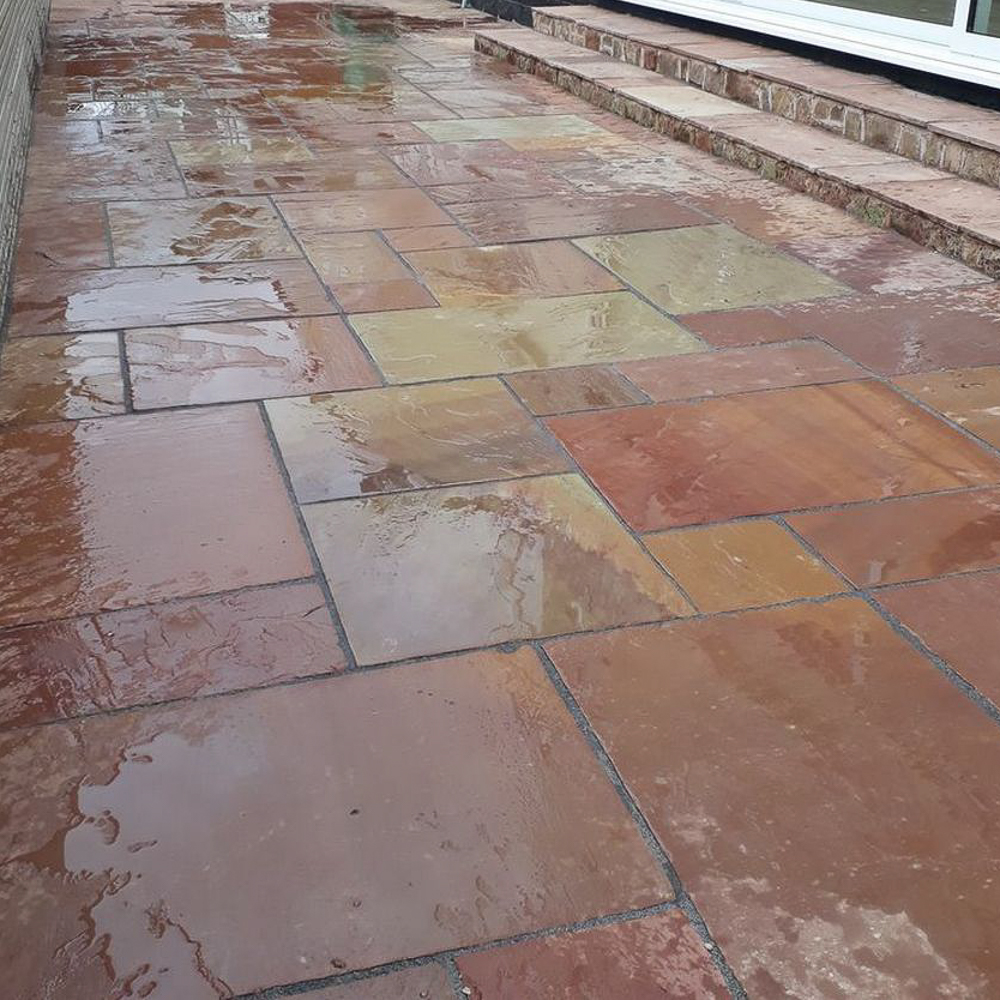
Dry Appearance: Red, Gold, Orange, Pink, Apricot, Tan and Ochre
Wet Appearance: Dark Gold, Terracotta, Red, Bronze & Brown.
Indian York paving is an unusual yet stylish Indian Sandstone product which can add a statement to any setting.
The Indian York colour is a soft variation of mid to light grey tones like the Kandla Grey with warm brown/copper/iron oxide seams and swirls within.
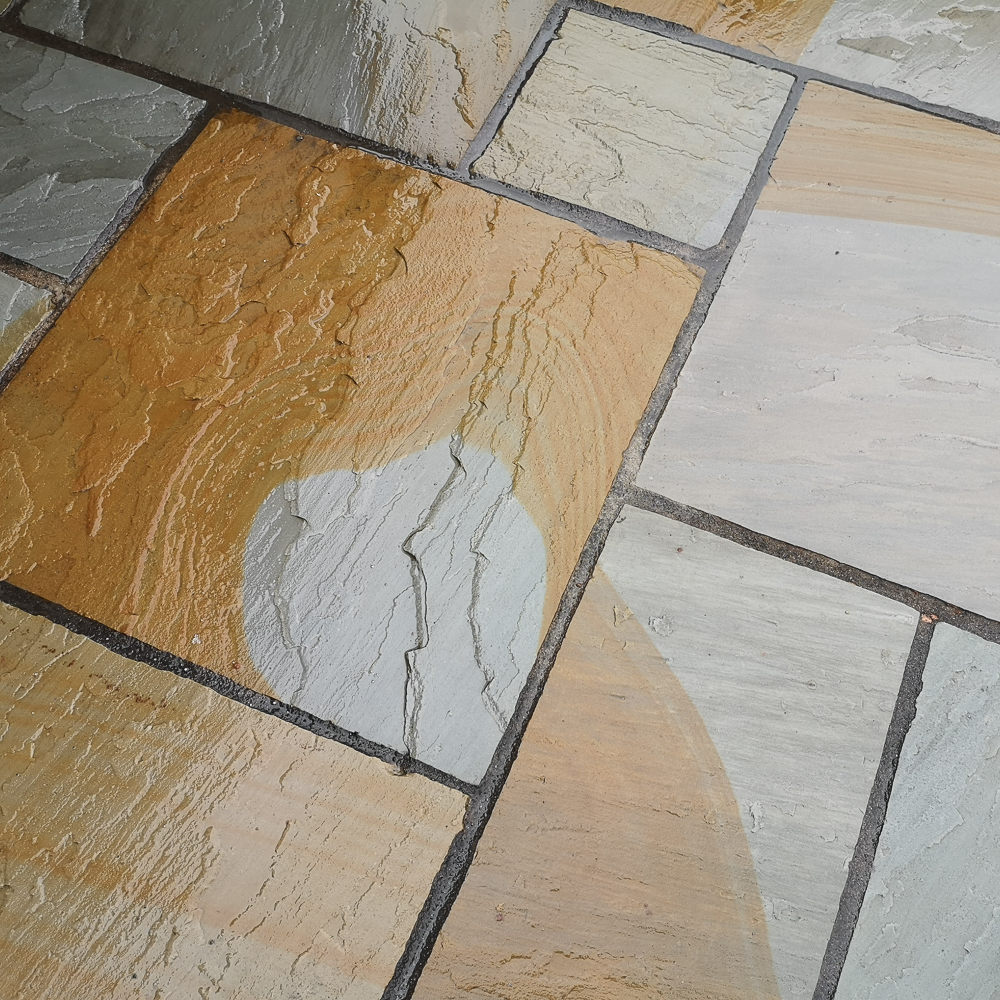
Dry Appearance: Gold, Orange, Grey & Tan
Wet Appearance: Dark Grey, Orange, Bronze & Brown.
Raveena Stone paving is a veritable cavalcade of colours, some subtle and some very vibrant. Browns, greys, purples, blues, reds and yellows in every conceivable shade combine to give a colourful finish which will always please.
The vivid colours of Raveena show considerable variation from pack to pack. So, if you are purchasing more than one pack, selecting pieces from each pack when laying will provide a natural and eye-catching blend.
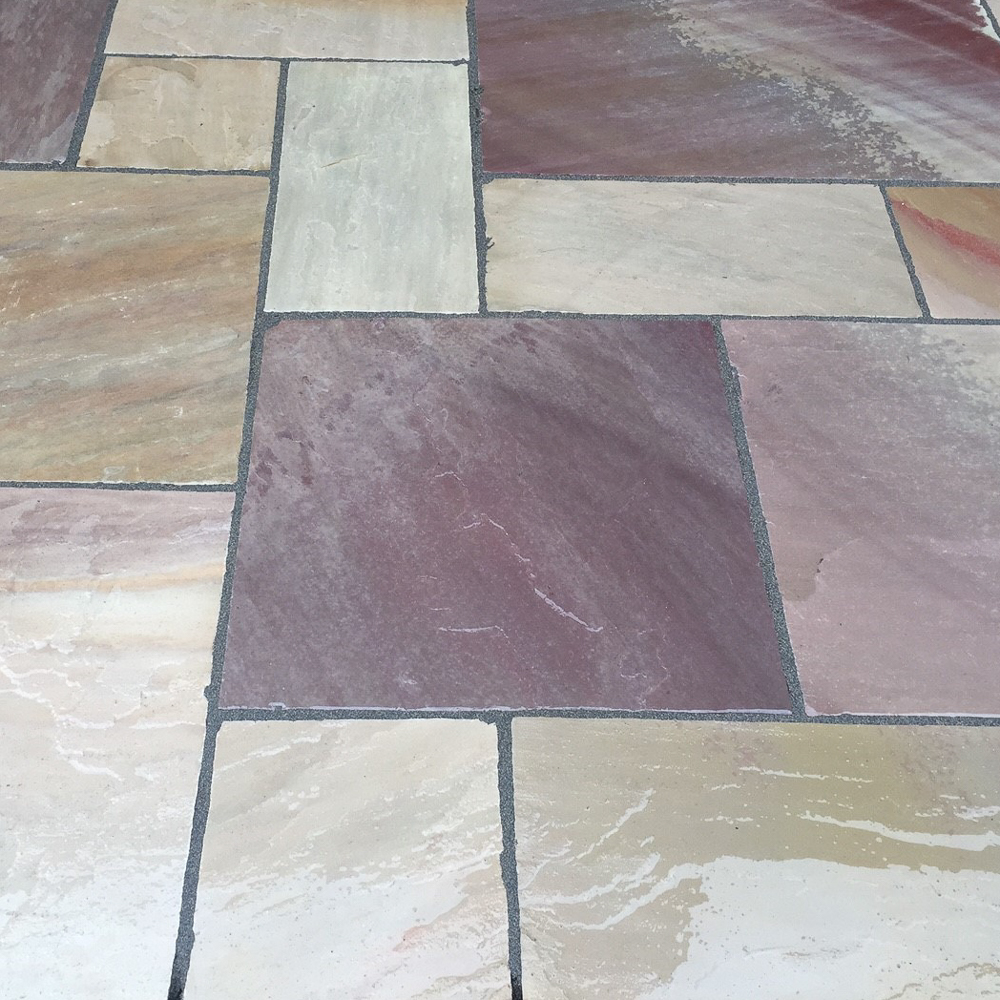
Dry Appearance: Red, Gold, Orange, Pink, Apricot, Tan and Ochre
Wet Appearance: Dark Gold, Terracotta, Red, Bronze & Brown.
Lalitpur Yellow Indian Sandstone is a deep, rich, mellow, golden colour throughout with minimal variation. It is a distinctive choice and blends well with many of our decorative aggregates in particular, Ringwood and South Cerney.
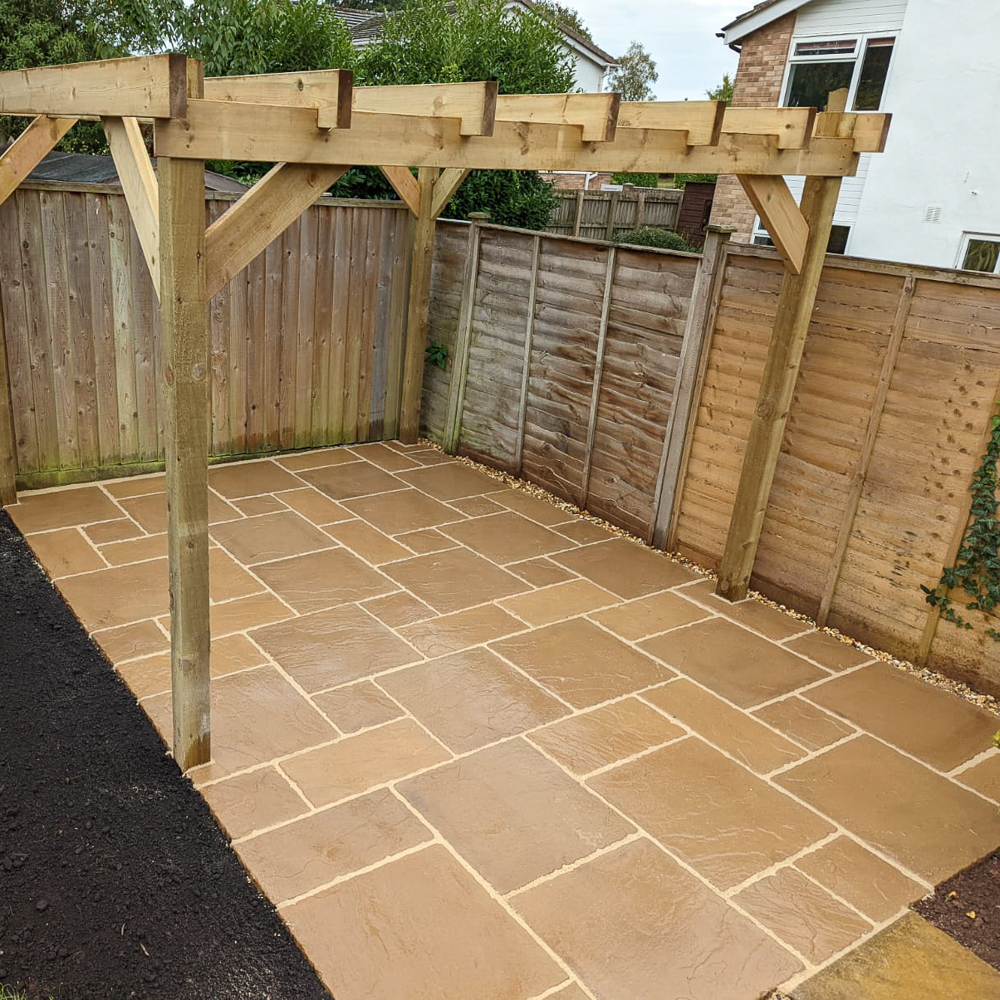
Designed & Installed by MC Building & Landscaping
Dry Appearance: Deep gold, Light Brown, honey and mild red with darker patterns and hues
Wet Appearance: Gold, Brown, Honey and Mustard
Sandstone slabs are a popular choice for a wide range of applications due to their durability, natural beauty, and versatility. When considering the use of sandstone slabs for your next project, it’s important to take into account factors such as durability, colour variations, texture, porosity, maintenance requirements, cost, availability, and compatibility with your intended use and location. With careful consideration of these factors, you can ensure that you choose the right type of sandstone slabs for your specific needs and budget, and enjoy the benefits of this stunning natural stone material for years to come.
We offer a wide variety of Indian sandstone colours for paving, walls, copings and edges.
Check out our complete range of Indian sandstone paving HERE for additional colours and styles:
We hope this Rough Guide To Indian Sandstone as helped, but in the event that you would like more guidance or advice about these products or anything else, please do not hesitate to contact us. We will do everything possible to help you.